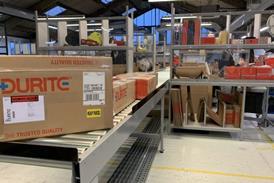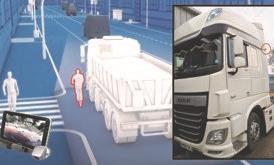
At almost 1m sq ft, Tesco’s giant flagship Reading DC is one of the largest grocery distribution sites in Europe.
The opening of Reading in June 2013 on a former Courage brewery site is part of one of the largest change programmes in UK retail distribution history, overseen by Tesco distribution director Steve Strachota (pictured, and see Meet the boss below).
Tesco has been drawing the management of its distribution centres back in-house from the 3PLs.
“Our vision is that distribution is a competitive advantage for the business,” he says. “I think we do it better than anyone else and we are adding value rather than being seen as a cost centre.”
Reading is the largest of three DCs Tesco has opened in the past year, each specialising in grocery, fresh food and general merchandise (GM).
The Reading grocery site is joined by the 430,000sq ft Dagenham fresh foods site – the first to feature two sections dedicated to serving 400 Tesco Express convenience stores - and Fenny Lock, which has been repurposed for online deliveries. This 500,000sq ft fulfilment centre consolidates online GM for trunking to larger stores using conventional distribution channels, reducing reliance on couriers and improving both service levels and cost efficiency.
Combination
Online grocery orders are fulfilled from a combination of local stores and a small number of dedicated home delivery fulfilment centres. There are six currently located around the M25 catering to the high density market in London and the home counties, a model which is profitable for Tesco to the tune of £127m a year. “We are 50% of the UK supermarket home delivery business,” he says. “We have the scale and we make money so I can’t see us going to an Ocado [warehouse based] model.”
The move into the 902,000sq ft Reading DC from two older, smaller sites in Chesterfield and Weybridge was to support Tesco’s store expansion programme in west London and the surrounding area. “By locating product closer to our customers we reduce the distance travelled,” says Strachota. “It also enables us to more closely match the product mix to the needs of the local population.”
Reading holds around 11,500 lines and serves 467 stores, of which 335 are the Tesco Express convenience format. Tesco is still adding 150 new Express stores a year to its portfolio of 1,700 across the UK, with nearly 3,000 stores in total across all formats. In its peak week before Christmas 2013 Reading handled 4.85m cases, delivering “the best service ever” according to Strachota. “It performed spectacularly,” he says. “We have tried to create a special culture here, by recruiting the long term unemployed and making them feel part of a team.”
Warehouse to wheels
There are 140 drivers employed at Reading and Strachota says Tesco is “looking closely” at a warehouse to wheels programme to develop its driver pool. “We are considering how we can provide incentives so they pay for their own training,” he says. “We have signed up to a credit union so soon they can get loans for training and we will then provide the opportunity.”
The opportunities are clearly there at Tesco – Reading depot manager Chris Jones started out just ten years earlier working in at the Magor DC in south Wales.
Reading essentially operates 3 different functions from one warehouse. There is a 600,000 sq ft RDC delivering goods to stores, a 100,000 sqft NDC that trunks slower moving grocery lines to other RDCs, and a 150,000sq ft trunking station. The trunking station receives cages of non-food goods, such as clothing, general merchandise or click and collect orders from elsewhere in the Tesco distribution network to be consolidated onto store deliveries.
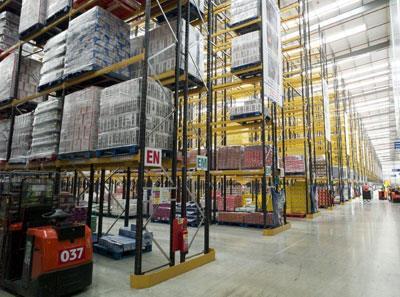
The Dagenham fresh food site also functions as an RDC serving stores in east London and the south east of England. Under the new regime, only the Livingston RDC in Scotland is now the only composite site holding both fresh and ambient products.
“For large stores in high density areas it makes no sense,” says Strachota. “For our convenience stores we also try to send fresh and grocery deliveries separately. But where there are delivery restrictions, some stores do get multi temperature deliveries.”
Frozen food
Tesco has a national frozen DC in Daventry run by DHL Supply Chain and frozen foods are also stored at the Doncaster and Livingston DCs. “Frozen products are trunked to the fresh sites and sent to the stores in multi temperature drops,” says Strachota. “Less than a quarter of Tesco volumes are frozen. For our Express stores, frozen is a challenge. We need innovation here such as CO2 cooled containers to find different ways to provide frozen food to the stores. Frozen is becoming seasonal now – we do more fresh at Christmas for example.”
Almost 7,500 product lines held at Reading are classed as faster moving and the site is trialling a cross-dock operation for certain very high volume products from suppliers such as P&G and Walkers. “Walkers used to deliver direct to store once or twice a week, but that meant high inventory levels,” says Strachota. “Now we pack by store here which increases availability and reduces inventory.”
Over 99% of product sent to stores goes on cages to minimise handling of product in stores – with little storage available most product goes straight from the truck to the sales floor. “Back rooms are now minimal so most products are day one for day one,” says Strachota.
But Tesco is experimenting with quarter pallets of fast moving lines such as beer, water and sugar that are cross docked and sent direct to store. “They can replenish direct from the pallet to avoid us having to pick a full cage of the same product,” says Strachota. “It reduces handling and so reduces the end to end cost. But I don’t want delivery staff taking product onto the sales floor – we are good at offloading and the store staff are good at making sure the right stuff is on the shelves.
“We are talking to our suppliers about how we organise ourselves and do things differently. A lot of people talk about collaboration but there is more to do.”
Large scale
The scale of the operation is exemplified by the fact that Reading sends up to six full doubledeck trailer loads to one of Tesco’s flagship stores, the 100,000sq ft Tesco Extra at Sandhurst in Berkshire. This contrasts with the smaller Express formats which may only require three deliveries a week. And while most superstores and Tesco Extra sites can accept deliveries around the clock, the urban Express stores are often restricted to deliveries during their opening hours – typically 7am to 11pm.
“In the Olympics we trialled quiet deliveries and found we can deliver in the evenings and still be a good neighbour,” says Strachota. “Fresh product has to be there in the morning so we are also looking at secure drops using keypad access to the back of the shop, primarily in London. Alternatively, we could have a man in a van going round in advance to open the stores.”
As well as smaller trailers for urban deliveries, Tesco is looking at narrower cages for the Express stores, which have less roomy aisles than the superstores.
Visitors to Reading are confronted with a sea of white Mercedes-Benz Axors – the ultimate ‘supermarket trolley’ as this popular fleet workhorse has been dubbed. While it outsources its inter-depot trunking to third parties, Tesco owns most of the transport used to deliver to stores, using only a small subcontractor element to cover peaks.
The exception that proves the rule is in the North East, where Stobart runs a campus of three sites – Doncaster, Chesterfield and Goole - where resources can be flexed between them to improve efficiency. Strachota is keen to see if some of the sites from which Tesco runs its own transport operation could be run in a similar campus style – Magor in South Wales and Avonmouth, or Reading and Southampton are possibilities for example.
There are 166 units and 363 trailers based at Reading; like other supermarkets the expansion in store formats has meant a similar growth in the type of trailers Tesco uses, with 8m, 10m, 12m, 13m and doubledeck variants now on the fleet.
“We build around efficiency to reduce road miles and carbon emissions,” says Strachota. “In the last two years we have cut carbon dioxide emissions per case by 14% and our target is a 25% cut by 2020 - and that is on top of the 50% cut achieved in the previous five years.”
Rail freight
A significant element in these impressive carbon reductions have come from switching from road to rail wherever possible – Tesco says it has a “complete and ground-breaking commitment to rail” and as a result is removing 13m road miles each year. Putting freight in rail is problematic in the UK, with an ageing and crowded rail infrastructure and the inherent cost penalty associated with relatively short rail journeys, often with a road leg on at least one end.
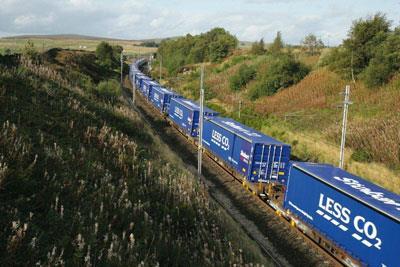
But Strachota insists he only uses rail when it makes economic as well as environmental sense.
“We operate five rail routes and are the only grocer to do that,” he says. “Around 50% of our volumes from the national grocery DC at Daventry now go by rail to our other regional DCs.”
At Daventry, Tesco operates NDCs for clothing, grocery, general merchandise, frozen and consolidation serving stores in UK and Ireland. The 840,000 sq ft grocery DC has 90,000 pallet locations for 17,000 slow moving lines. Tesco has been moving towards curtainsided train cars as they are lighter and but still maintain the rigidity of the container.
To minimise the cost penalties associated with double handling of rail containers, Tesco is now taking loads from the railhead direct to stores in Scotland rather than going via an RDC. “The majority of containers now go direct to store,” says Strachota. “This also cuts a day from the journey time.”
Tesco uses standard 40ft ISO containers for its multimodal operation but has taken on 25 longer semi-trailers which would enable it to experiment with longer containers in future.
Doubledecks
Tesco has invested heavily in doubledecks, not just in the trailers but in the infrastructure to handle them, including lifts to load cages on the top deck. “We consolidate product here on doubledecks,” says Strachota. “Big stores such as Sandhurst can also accept deliveries on doubledecks.”
The retailer has also invested in 35 dual fuel biomethane trucks, sourcing the fuel at Gasrec’s station at Daventry, and Strachota says it is working with its primary transport contractors Stobart and Maritime to “get them onboard” too.
But getting the basics right – such as filling the trailers on their return leg from store back to the DC – is still where quick wins can be made.
DC manager Jones says: “We can backfill the 13m trailers with 75 empty cages. We can also backload full pallets from suppliers. 100% of the vehicles come back with something on.”
Strachota adds: “Three quarters of supplier deliveries are managed by us. That puts us in control and drives scale to businesses that don’t have it.”
A significant volume backload from stores to the Dagenham fresh food DC is to bring organic waste back for central processing. “That improves efficiency in the stores, takes road miles off and enables us to sort, recycle and reuse where possible,” says Strachota. “We also do all our cage and tray washing at our fresh sites.”
Meet the boss
Steve Strachota is not your typical distribution director, especially one in charge of an operation on the scale of Tesco.
Tesco Distribution is a limited company and its accounts for the year to February 2013 show it made an operating profit of £82.6m on turnover of £1.68bn – which would have put it comfortably in the number 2 slot in MT’s Top 100 if it was a haulier rather than an own account operator.
Britain’s biggest supermarket serves its 2,600 stores in the UK and Ireland (of which 1,700 are Express convenience stores) with 32 depots that handle 60m cases in a normal week, rising to between 70m and 75m in the run up to Christmas. Only bread and milk still go direct to stores from the supplier – everything else goes through Tesco Distribution.
Strachota is first and foremost responsible for Tesco’s UK distribution operations, but also has a global remit to share best practice from the UK across all Tesco’s markets in Eastern Europe and Asia. “Best practice is in the UK and we are trying to put that into other countries such as Thailand and the Czech Republic,” he says.
He only joined Tesco four years ago from Cadbury, where he worked as finance and strategy director and then CEO of its Russian operation. “I didn’t want to work for Kraft,” he laughs.
His first job at Tesco was as chief financial officer for the Polish business.
“I was then asked to do logistics,” he says. “I had no first-hand experience of moving boxes and have learnt it all over the last two years. Luckily I am blessed with the best team in the world.”
He says his challenge is to support Tesco as it transforms its business over the next 10 years. “Our CEO [Philip Clarke] is open about the shift to the digital world and its impact on us,” he says. “How do I provide a more personal service for our customers while keeping our scale advantage?”
The tactical challenges that flow from this strategic vision include: Serving the growing convenience store portfolio better; improving product availability; increasing the personalisation of product ranges in stores to better match the local customer profile; and merging Tesco’s online GM offer with its main store estate to reduce reliance on couriers.
Although he hails from Iowa in the US and still has a residence in Florida, Strachota’s surname is actually of Czech origin.

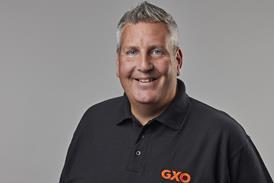

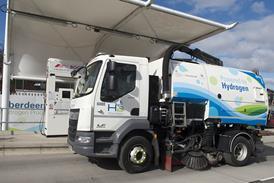


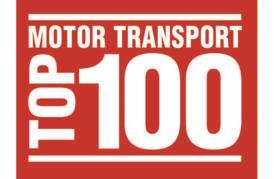
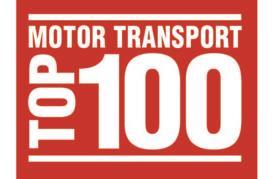
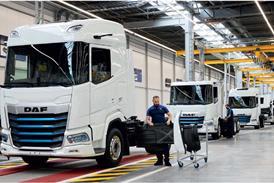
![Mercedes-Benz_eActros_600_(1)[1]](jpg/17820_mercedesbenz_eactros_600_11_978080.jpg)

